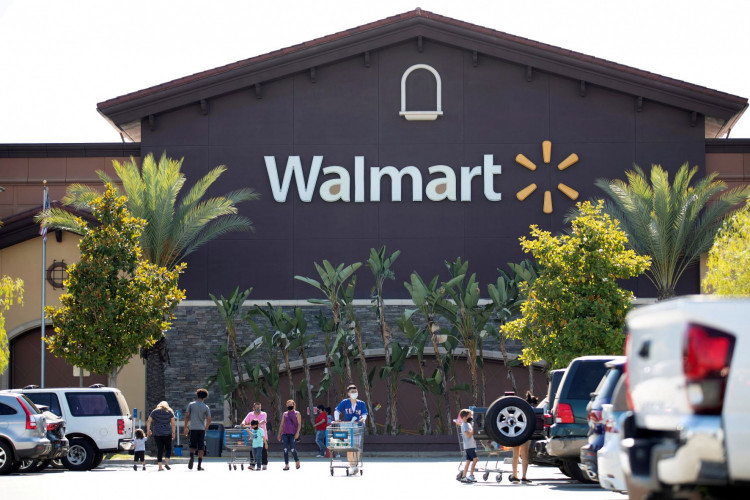Walmart has raised its annual sales and profit forecast for the third consecutive time, reflecting the retailer's confidence ahead of the crucial holiday shopping season. The world's largest retailer announced Tuesday that its U.S. same-store sales rose by 5.3% for the quarter ending October 31, beating Wall Street expectations and signaling strong momentum heading into the holidays. The company also posted an 8.2% increase in profit, highlighting robust consumer demand across various segments, including online sales, which surged by 22%.
CEO Doug McMillon said Walmart has seen increased shopping volumes in its stores and an even faster rise in online pickup and delivery services. "In the U.S., in-store volumes grew, pickup from store grew faster, and delivery from store grew even faster than that," McMillon noted. The surge in sales was notably driven by higher-income customers earning over $100,000 annually, a demographic Walmart has increasingly targeted by enhancing its grocery offerings and improving product assortments in clothing, electronics, and home goods.
Walmart's gains are a testament to the changing retail landscape, where inflation-weary consumers of all income levels seek better value. As inflation trends downward, Walmart has emerged as a destination for more affluent shoppers traditionally aligned with Amazon. The retailer has also ramped up its e-commerce capabilities, including buy-online, pickup-in-store services and its Walmart+ membership program, which offers same-day delivery on groceries.
The company is optimistic about the holiday season, with McMillon noting, "The majority of our customers are maintaining their holiday plans year over year amidst the election, the calendar shift, and the economic backdrop." As competitors like Amazon and Target roll out early holiday deals, Walmart has positioned itself to capture greater market share by expanding its selection of private-label brands and offering competitive grocery pricing.
Walmart's strong quarterly performance contrasts with the broader retail industry, which has seen a wave of store closures in 2024. Chains such as Family Dollar, Walgreens, and Big Lots have announced widespread closures, reflecting the economic strain from high interest rates and price increases that have outpaced many consumers' ability to pay.
Walmart has been proactive in adapting to these shifting economic dynamics. CFO John David Rainey acknowledged that the retail giant has navigated a challenging tariff environment for years. "Tariffs, though, are inflationary for customers, so we want to work with suppliers and with our own private brand assortment to try to bring down prices," Rainey told CNBC. The comment comes as analysts warn that newly-elected President Donald Trump's proposed tariffs on imports could increase costs on a wide range of goods, from clothing to travel products.
Walmart's strategic investments in automation have further bolstered its supply chain capabilities, enabling fresher produce and faster delivery times for online grocery shoppers. The retailer recently reduced the annual fee for its Walmart Plus membership by 50%, hoping to attract even more consumers to its same-day delivery service.
Joseph Feldman, an analyst at Telsey Advisory Group, noted that Walmart's efforts to attract wealthier customers appear to be working. "I do think Walmart has been capturing a more affluent consumer. I think the Walmart Plus membership has helped drive that, and the company continues to reflect good strength in their online business and their pickup and delivery services."
Walmart's U.S. comparable sales growth of 5.3% surpassed analysts' expectations of 3.61%, according to LSEG data. Sales gains were broad-based, extending across general merchandise, which had been struggling due to persistent inflation, and the health and wellness sector, buoyed by strong demand for weight-loss drugs like GLP-1.
Walmart projects fiscal 2025 consolidated net sales growth of 4.8% to 5.1%, up from its previous forecast of 3.75% to 4.75%. With the holiday shopping season underway, Walmart's ability to attract and retain a diverse consumer base, from budget-conscious families to affluent shoppers, underscores its dominant position in a fiercely competitive retail market.






